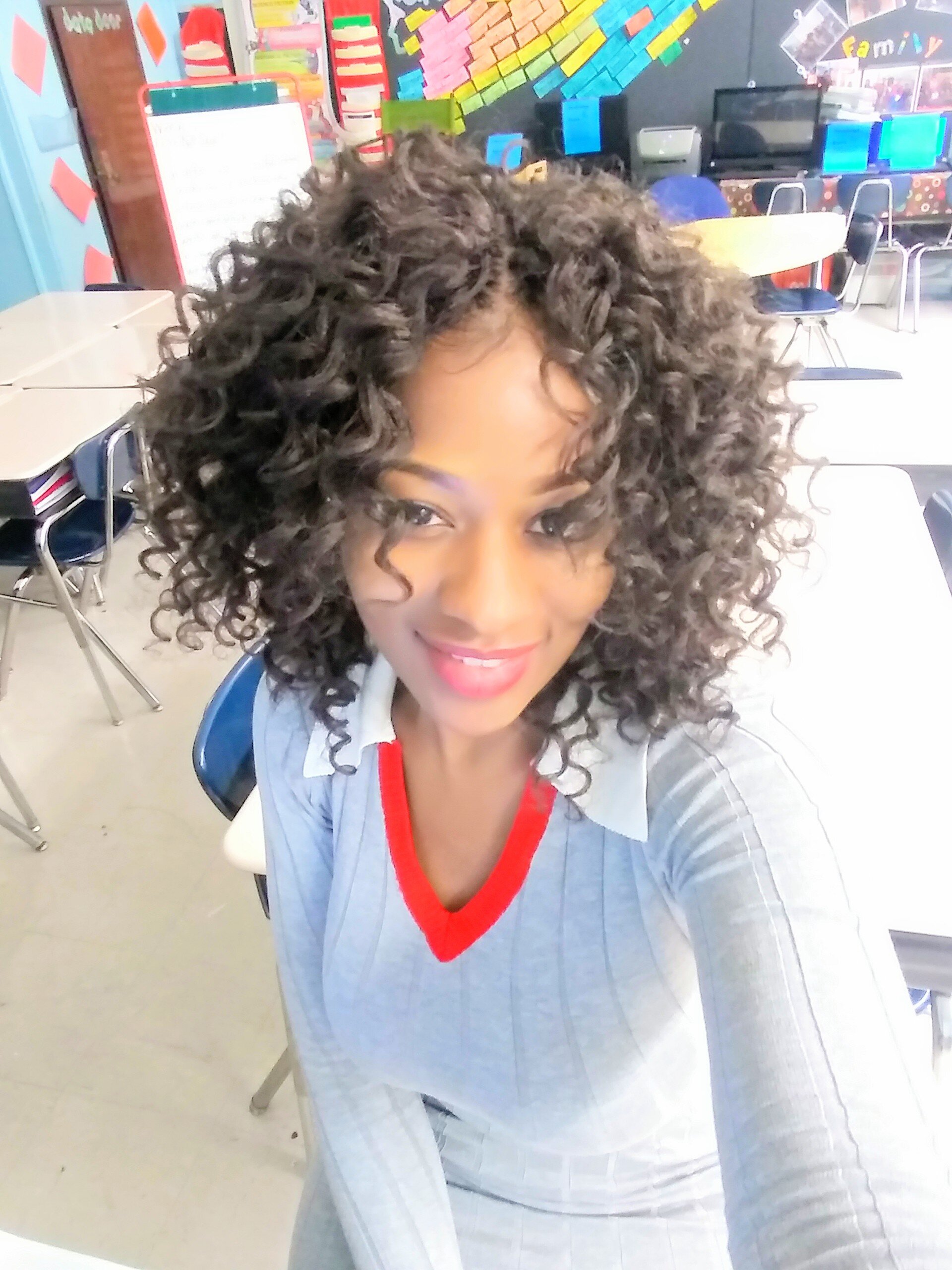Managing wellness is just part of the job for a Chicago Public School teacher
Back in October, waves of marching teachers and supporters of the Chicago Teachers Union’s strike donned red shirts and held signs to advocate for a new contract with better work conditions and resources for Chicago Public School students. The two week strike began Oct. 17 and ended on Nov. 1. It was during these eleven day the lives of teachers both in and outside the classroom was put under a spotlight.
Fifteen-year veteran teacher, Andrea Parker, currently a middle school teacher at Robert Fulton Elementary in the Back of the Yards neighborhood, said her role in the classroom extends beyond just education - she also cares about her students’ holistic well-being.
“I can definitely say [I’ve been a] counselor because I have a lot of kids who deal with trauma or have emotional issues and I have to look into that and then, you know, once I feel like it's an issue beyond my control, I have to refer them to the counselor,” said Parker
Parker also evaluates her students’ physical health using a similar method.
“[Students] constantly tell me their head hurts or stomach hurts, they have to throw up, and if the nurse is not here I have to evaluate the seriousness of it,” she added. “If I feel like it's very serious, I resort to calling their parents ask them if they could pick them up. If not, then I have to let them lay their head down.”
Parker too recognizes that some of her students may face challenges beyond her resources to support them. Yet, she still wants to give her best effort because she would want the same investment from her son’s teachers.
“When I look at my students and I see that they need something I am not going to say, ‘well, I have my personal child. I can't do anything for them,’“ she explained. “I have a heart. These are the family ties. I look at them as if they are my child. I look at it in the sense like if my son was in a situation like that, and I was not around whether if I'm deceased or I couldn't help him. I would hope somebody will look at my child and want to help him and not say, ‘Oh, well, that's not my child I had nothing to do with that. I'm just going to work from 8 a.m. to 3 p.m. and my job is over here.’”
It’s for this reason that Parker says she does what she can for her students. She knows that whatever impact she makes on them today will follow them into their future.
“I think about my students because they're going to be a legacy,” Parker said. “They are my legacy. So when they get older or as an adult, I want them to always have good thoughts about me or my teaching period. I don't want any student to grow up and say ‘well, my teacher did not help me; they did not care about me.’ I hear that all the time. Like, adults, when they were in school the teacher didn't care if they were. They were just there for the paycheck And that broke my heart to hear stuff like that.”
Creating a positive, memorable experience for students to look back on is also important, Parker said.
“I know its just ironic because teachers, you know, we come to work and help you and cultivate you and make you the best you can be. So when you say somebody who has been paid to do that did not do that and they did the very opposite of that, demeaned you, made you feel terrible and insecure. I hate to hear that. And so there is no boundary when it comes to me as a teacher and a parent. I'm here to protect them, teach them, encourage them, motivate them to make sure they are safe.”
Teachers like Parker say there are other people besides educators who should be held accountable for student success.
“Well, first of all, the district should definitely be held accountable because they are the one; who set the standards,” Parker said. “They are the ones that provide the resources, the teachers, the money to finance the programming in order for them to be successful. So we have to make sure that they are providing differentiated programming for students that meet their needs. Make sure it's equitable so everybody is on the same thing in order to be successful.”
A Teacher’s Worry and A Possible Solution
Teachers not only have to worry about the well-being of their students but themselves as well. According to “Teacher stress: Balancing demands and resources” by McCarthy and Christopher Jay, teaching has been identified as overwhelming profession due to a wide array of challenges. The report states “The intensity of teaching and running a manageable classroom in the United States shows an average between 20-25 percent amount of stress that is caused.“
Parker admitted she worries about meeting her weekly work requirements and she isn’t alone among her colleagues.
“People coming in my face crying...they said they were going to lose their jobs because they could not meet the demands of the principal,” she said. “There was such a heavy workload and I felt like there was one point to...okay, there is a matter of time before I get written up and I did get written up. I got written up for just collaborating on lesson plans. I was told that I copied lessons plans, you know, because we collaborated. It's like they don't want you to collaborate. They want you to do everything on your own. It was very difficult .So, I was very stressed out then. I would have heart pains and, you know, heart issues and things like that. I would go to the hospital as well. [The doctor] said, well, you know, you’re just stressed.”
Kasey Franco Director of Training & Education at NAMI discussing mental health awareness during a meeting. Photo courtesy of NAMI
After a long day of playing the role of a counselor, nurse and advocate for the students how do teachers focus on their own self-care/ self-recovery and what does it mean? And how should it be done in a healthy way? Director of Training & Education at National Alliance Mental Illness Kasey Franco had a few suggestions to address these questions. She said self-recovery can be seen as many different things for different people, whether that’s community or being around others or something else.
“When we think about what makes somebody well in their community, or what makes a person feel good and feel stable, it's not one thing, right? There's a whole way to think of something in a holistic way,” she said. “So we think of it is what does the community look like? Because that's where people really heal is in communities.”
Franco also says that supportive families, healthy relationships, a stable, purpose-driven life, and a safe environment with access to mental and physical health resources can all act as self-recovery. She outlined the six elements of self-care to consider are: physically, psychologically, emotionally, spiritually, socially and professionally well-being.
“Ideally, a healthy self-care strategy should include an activity that addresses each of these factors every day,” she said. “That way, you can make sure that every element of your overall health and well being is taken care of and self-care activities can be small or they can be large habits.”



